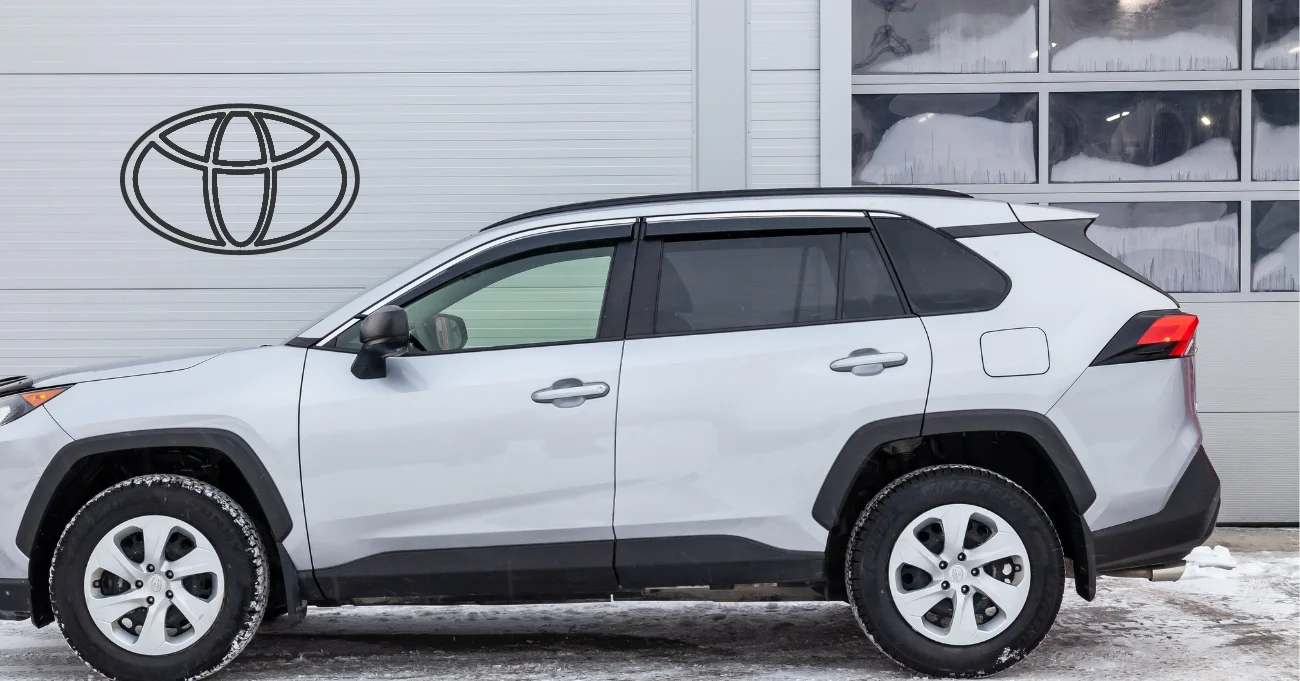Despite being the top car manufacturer by volume, Toyota recall settlements have tarnished the company’s record since the first major recall crisis of 2009-2010, which involved 14 million vehicles. Although the recent recalls haven’t reached that scale, Toyota still faces numerous class action complaints tied to long-standing unresolved issues.
At Sparrow, we specialize in class action discovery and claims filing. Whether it’s automotive class actions like the Toyota recall and the Hyundai theft lawsuit or retail cases like the Macy’s lawsuit and Walmart lawsuit, we notify clients of eligible class actions and handle the claim process on your behalf to secure their deserved compensation with minimal effort.
Drawing on our experience, this blog covers the latest updates on three major Toyota safety recall settlements, detailing what each settlement addresses and the compensation you can expect as a claimant.
Let’s start.
Overview of the Toyota Recall Settlements

The Toyota recall controversies have steadily increased since 2020, with tens of millions of vehicles being recalled in recent years due to a variety of defects. The most notable defects include potential brake failure, airbag malfunctions, and unintended acceleration.
A Brief Timeline of Toyota Recalls
Major design flaws in Toyota vehicles first surfaced in the late 2000s, with unintended acceleration complaints among the earliest to prompt litigation. Since then, the National Highway Traffic Safety Administration (NHTSA) and equivalent authorities in other countries have guided Toyota recalls, deciding their extent and other specifics.
Here is a brief history of Toyota recalls since their 2009 surge:
- Unintended Acceleration Recalls (2009): After brief investigations, a recall for Toyota vehicle models, including the 2007-2010 Camry, 2004-2009 Prius, and 2005-2010 Tacoma, was initiated due to defects that increased crash risk. These recalls followed reports of unintended acceleration linked to sticky accelerator pedals and floor mats trapping the pedal.
- Brake Defect Recalls (2010): Toyota recalled over 1.66 million cars worldwide due to faulty brakes and engines. A class action lawsuit was filed, alleging that Toyota was aware of brake defects in hybrid models but failed to properly address the issue.
- Unintended Acceleration Settlement (2013): A proposed national settlement was reached on August 6, 2013, in which Toyota agreed to pay $1.6 billion to settle claims related to unintended acceleration issues. Claims are closed by 2014 and are fully paid out by 2015.
- Takata Airbag Recalls (2016): Toyota recalled over 1.4 million vehicles in the U.S. due to faulty Takata airbags that could explode upon deployment, posing serious injury risks. This was part of a larger issue affecting several automakers.
- Airbag Control Unit (ACU) Recall (2020): 2.9 million cars were recalled due to issues with the airbag sensor failing to deploy or deploying randomly.
- Filing of Latest Major Brake Defect Class Action (2021): The most recent major class action surrounding brake issues is filed. The defect was allegedly caused by faulty booster pump assemblies, causing it to partially or completely fail even in new vehicles.
- Hendricks v. Toyota Motor North America, Inc. Dismissed (2022): Both parties agreed to dismiss the 2021 class action, with each side bearing its own costs.
- Toyota Settles Individual Brake Defect Claims (2022): Toyota decides to provide compensation to individual brake defect claims rather than through a class action settlement.
- Toyota Agrees to Class Action Settlement for ACU Issues (2023): A total of $78.5 million is dedicated to resolving individual claims in the class action surrounding faulty airbag control units.
- New Brake Defect Recall (2024): In 2024, Toyota issued another brake defect recall affecting more than 42,000 vehicles across the United States, including the 2023-2024 Corolla Cross Hybrid and Prius Prime. This newer recall seems to extend the long-standing brake-related problems that have plagued Toyota hybrids for years.
Key Safety Issues Addressed by the Recalls
The Toyota recall list covers a wide range of issues that compromised the safety of Toyota vehicles. The most significant problems addressed in the latest major class actions include the following:

Unintended Acceleration Problem
The first major Toyota recall in 2010, known as the “Toyota Recall Crisis”, was due to unintended acceleration caused by problems with the electronic throttle control system. This resulted in sudden, uncontrollable bursts of acceleration, posing a high risk of a crash.
The defect was linked to injuries and fatalities, with some cases exacerbated by improperly glued floor mats trapping the accelerator.
Brake System and Other Mechanical Failures
Several Toyota models—particularly the Toyota Prius, Toyota Camry, Toyota Tundra, Toyota Sequoia, Toyota Crown, and Toyota Tacoma hybrids—have experienced brake system failures caused by issues with the electronic braking system. These failures have led to decreased brake effectiveness, increasing the risk of accidents. The root cause often lies in defective brake booster pump assemblies, which can lead to a loss of power brake assist, making it harder to stop the vehicle.
Airbag Malfunctions and Safety Risks
The ongoing recall involves airbags for Toyota vehicles supplied by Takata, which were found to have the potential to explode upon deployment, releasing metal fragments that could cause serious injuries or even fatalities. This was not the only issue with Toyota vehicle airbags, as some class actions reported failure to deploy on collision or spontaneous deployment without any impact.
How Affected Consumers Can Benefit from the Settlement
The different Toyota recall settlement agreements offer various benefits depending on the degree of harm caused by the defective vehicle. Both owners and lessees of affected vehicles are eligible to file a claim, which could include repairs, replacement parts, and financial losses incurred due to the recalls.
Steps for Claiming Compensation
Claiming compensation from a Toyota recall settlement involves several general steps:

- Verify Vehicle Eligibility: Check whether your vehicle is included in the updated Toyota recall 2024 list using the VIN (Vehicle Identification Number) lookup tool provided by Toyota.
- Submit Documentation: Gather all necessary documents, including proof of vehicle ownership or lease, repair bills, and receipts for rental cars or other expenses incurred due to the recall.
- Submit Your Claim: Complete the claim form available on the settlement website and submit it along with the required documentation.
Those who own multiple vehicles or whose vehicles are eligible for multiple settlement claims must submit a claim for each vehicle and each settlement.
Available Repairs and Reimbursements
The different Toyota recall settlements offer different repair and reimbursement packages to eligible class members. Here is a breakdown of what each main settlement makes available to claimants:

Unintended Acceleration Settlement
To address the unintended acceleration issue, Toyota implemented a brake override system for affected vehicles at no cost. This system automatically reduces engine power if both the brake and accelerator pedals are pressed simultaneously, preventing accidents. Consumers had two years to install the system after its availability was announced for specific models.
Besides the brake override system, Toyota set up a $250 million settlement fund to reimburse consumers for out-of-pocket repairs, towing, and rental care expenses before the recall. Payouts ranged from $37 to $125, depending on factors like vehicle type, location, and the claim’s specifics. Keep in mind, however, that the unintended acceleration settlement was finalized in 2014, and no new claims can be submitted.
Brake Defect Settlement

Vehicles with brake defects were also subject to repairs under Toyota’s own recall program, ensuring that any malfunctioning components were corrected without cost to consumers. Monetary damages for vehicles affected by the Takata recall may be available to claim with further inquiry. Following the latest recall, new class actions may gain traction without getting dismissed. Stay tuned for updates to this on Sparrow’s blog.
Airbag Malfunction Settlements
Claimants in the airbag malfunction settlements are entitled to several forms of compensation, primarily free airbag replacements for vehicles with defective Takata inflators. Toyota has also set aside $78.5 million to reimburse costs related to ACU defects, offering up to $250 in residual payments for all subject vehicles and a comprehensive vehicle inspection program. Vehicles completing the recall process will receive an extended warranty for new parts.
Those affected by the Takata recall may be eligible for monetary reimbursement upon further inquiry with Toyota themselves. To obtain reimbursement or repairs under the ACU settlement, claimants must submit a claim form via the official settlement website or by mail before December 16, 2026. The form requires vehicle identification details and evidence of repairs (if seeking reimbursement).
Long-Term Consumer Protections
Beyond immediate repairs and reimbursements, the settlement also included long-term consumer protections to ensure future vehicle safety and transparency. Here are the protections Toyota provided for each settlement:

Brake Override and Accelerator Pedal Warranties
Toyota extended warranties for certain parts related to recalls, including the brake override system and accelerator pedal assemblies. These extended warranties are part of a long-term customer care plan intended to cover potential future failures related to unintended acceleration, as well as repairs to other affected components.
Extended Airbag Inflator Warranties
In response to the airbag defect, Toyota extended warranties on the airbag inflators and offered a free replacement service to ensure long-term safety. This was crucial for consumers with vehicles equipped with defective Takata airbags, as the recall involved millions of vehicles globally and posed a risk of serious injury.
Brake Replacement and Servicing
Although the latest class action against Toyota for defective brake systems was dismissed, Toyota agreed to settle each claim individually. Affected vehicles on the Toyota recall list with defective brakes are entitled to free replacement and servicing under their customer care program. However, without a formal class action settlement, receiving monetary reimbursement for personal losses due to defective brakes may require further inquiry with Toyota themselves.
Toyota also agreed to enhance its recall notification process, making it easier for consumers to identify whether their vehicles were affected and to schedule necessary repairs. This step was taken to ensure that recalls were not only issued but acted upon promptly, mitigating the risk of future accidents or injuries stemming from known defects.
Key Takeaway
The Toyota recall settlement is a crucial milestone in addressing the long-standing safety concerns associated with Toyota vehicles. While the latest issues have not led to comprehensive class action settlements with monetary compensation packages, Toyota has committed itself to long-term service campaigns and potential reimbursement upon further discussions with Toyota.
If you would like to get compensated for any economic losses resulting from Toyota recalls, remember to first check whether your specific vehicle was affected by those recalls with Toyota’s VIN lookup tool or the NHTSA website. Currently, the only active class action settlement pertains to the defective airbag control units, but this could change with new safety recalls emerging annually. If your concern does not relate to faulty ACUs, it’s best to raise it with Toyota’s customer service for now.
Would you like to get regular updates on class actions like this one? Get started with Sparrow today and get a monthly list of class actions you might qualify for straight to your inbox. We’ll handle the claims filing process for you, ensuring you get compensated with no hassle.


